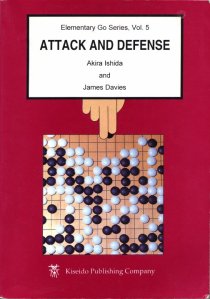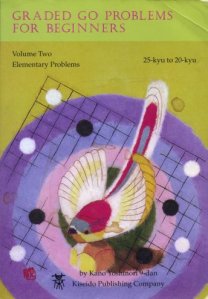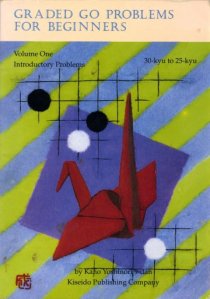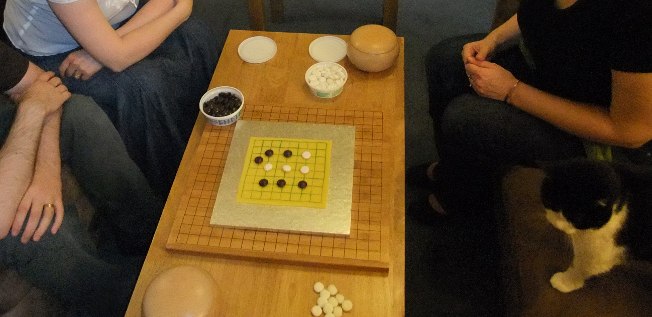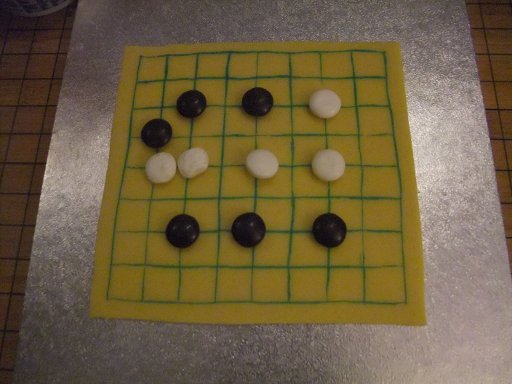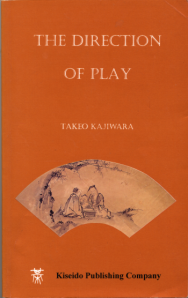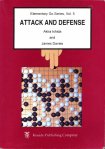 Chapter 2: Attacking Strategy
Chapter 2: Attacking Strategy
Gracious, this chapter is full of things to think about! The thoughts below are half ramble, half lists, with no real transition in between. I could tidy it up, or I could read more about Go before the looming Isle of Man tournament…. I think I’ll opt for the latter!
Introduction
It’s already been said in Chapter 1, but Ishida and Davies find it worth repeating:
“It’s the player with the weak groups who should be taking the risks, not his opponent.”
- Gain ground, then take time to consolidate.
- If allowing the opponent to live small allows you to consolidate your own territory, sometimes letting the opponent have a tiny bit of territory is better than trying to kill everything in sight
Also, I’m not so good at mentally erasing 40 moves from a diagram, so I have to lay things out on a board sometimes.
Just in case anyone else has the same trouble, here is the situation in Diagram 1 (the first diagram of the chapter) before the 40 moves numbered have been made:
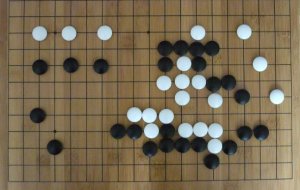
and here is the situation in Diagram 1 at move 21:
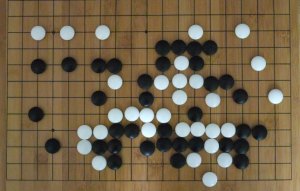
Attack to Gain Territory
In the first Diagram in this section, there is an interesting problem in which the reader is asked how to attack a weak black group at the bottom of the board. Two moves are available, one that takes eyespace away along the base of the group, and one that attacks from above, and looks to me to be an extension of a big white wall.
The last time I read this, I got the problem wrong because I’d just been reading books warning against not using one’s influence to build territory, and I was blindly trying to apply that idea to this position. In many discussions of influence, strong players seem to warn against using big, thick walls to build territory. Usually, there is some situation presented where one can use a wall to surround a little bit of territory, or you can drive enemy stones into one’s sphere of influence and make profit elsewhere on the board. This problem seemed to me to defy that sort of thinking.
This time around, the right answer looked right to me, which I guess is progress. So, what is the difference from the great-white-wall type of problems? It looks to me like in this case, black has a lot of settled or mostly settled territory around the edges already, so white’s plan is probably to either take a large part of the centre while black fixes up the sides. (Ishida and Davies call the centre white’s “chief asset in the game”.) Also, that big, thick white wall doesn’t look all that big and thick to me this time around. It looks a bit more, well, like something that black might want to hassle if he gets the opportunity. So, by making an extension from those white stones, white is helping to make them stronger.
- When attacking, think less about how to kill the opponent’s group, and more about which direction to attack from.
- Try to drive the opponent’s stone through ‘neutral space’ where neither side is going to make a lot of territory.
- If possible, choose a direction of attack that allows you to build territory or influence in open spaces.
- If possible, find ways to attack that will weaken the opponent’s other stones whilst he or she takes time to look after the stones under attack.
Running Battles
- Look for moves that allow you to strengthen yourself whilst weakening the opponent’s stones. Sometimes a running battle provides an opportunity to do this.
- Don’t push enemy stones in a direction that will weaken your own stones or allow the opponent to strengthen his or her own position.
- Running battles don’t necessarily have to happen in the middle of the board.
- “A struggle for power is basically a struggle for eyespace.”
Indirect or Leaning Attacks
Diagram 2 in this subsection is another problem that I got completely wrong before, also because I applied a rule-of-thumb that was misleading in this case. This time around, the correct sequence looked correct to me, but I remember worrying about it before, since black appears to be committing the cardinal sin of ‘pushing from behind’. I distinctly remember feeling woefully confused; Black 1 in Diagram 2 was not even on my radar at the time, and the 1-6 sequence seemed to contradict things that I was being told would improve my own game.
The discussion makes it more clear why pushing from behind is good in this particular case, but I double-checked the situation with R4d, just to make sure. He agreed that one should usually be hesitant to push from behind, but that in this case, there are several factors at play. First, white is very strong and the 5 black stones in the middle right are on death’s door. So, it is not surprising that, locally, white is at an advantage. Second, if one considers just the middle right and upper part of the board, black’s pushing from behind does have a great cost locally. Black loses a lot. However, when he strengthens White, he’s strengthening a group that is already strong, so it’s not as dire as if black were strengthening a weaker white group. Third, in this particular situation, the local loss is compensated by the power of move 7. Black gets to attack white, defend the corner and build territory all at the same time. It has so many advantages that it is worth considering a local loss elsewhere on the board.
- Sometimes, one can build up power for an attack by making plays that lean on enemy stones that you don’t mind strengthening in order to strengthen your own stones in preparation for attack on other enemy stones.
- Leaning involves contact plays or a ‘shoulder’ hit (katatsuki?).
- A leaning attack going wrong tends to be less devastating than an all-out, brute-force, in-for-the-kill attack going wrong.
- In the authors’ words, “leaning attacks like these are the esseance of go”!
Divide and Conquer
- Look for opportunities to attack two weak groups at once by sticking stones in between them.
- If two weak groups are far apart, just sticking a stone on the midline might not be that threatening. (See Diagram 9 in this section.)
- If two weak groups are really, really far apart, try chasing one side toward the other until the gap between them is narrow, and then stick a stone in between them.
- Having two week groups on the board at once is…dangerous.
Cuts
- A cut can be thought of as a splitting attack in which there are two weak enemy groups very, very close to each other.
- Be careful about cutting off something small enough that the opponent doesn’t mind losing. This can help the opponent consolidate the bigger part of the group. (Sometimes it’s better not to cut than to only cut off something small.)
- Sometimes, herding stones in a direction that keeps them weak or that allows you to keep up an attack on them is better than cutting and allowing the opponent to make nice shape.
In the game between Akira Ishida and Chen Zude at the end of the chapter, I think it’s lovely how white gets in the dual attacking moves 21 and 23 in Diagram 27 before starting the ko!
Note to self: come back to the example problems in the ‘Leaning Attacks’ and ‘Cuts’ sections…and look for some problems involving these kinds of situations. Maybe Get Strong at Attacking should go on the reading list?
